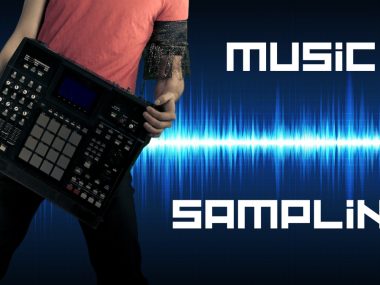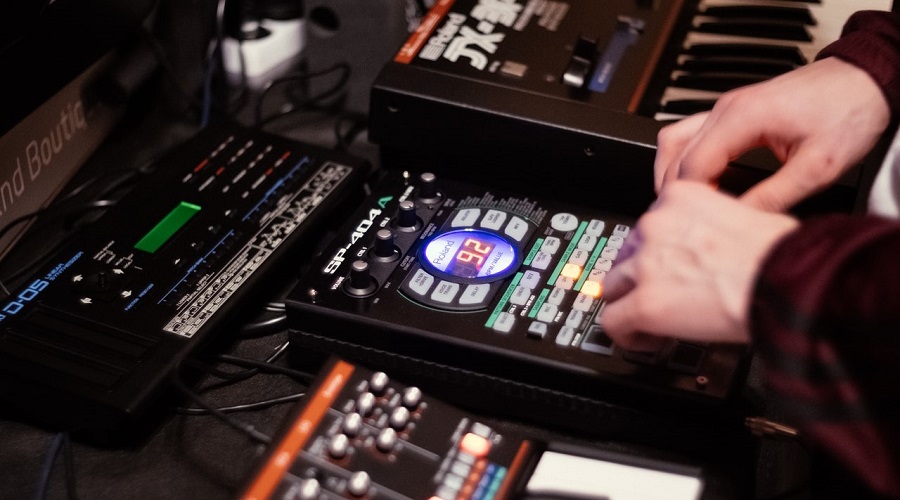Could it be possible that an instrument created back in the 80s could still be relevant in many modern genres today?
Well, the TR-808 is one example of how innovative ideas can persist for over four decades, despite any rough starts.
If you’re into hip-hop or electro music, you’ve undoubtedly heard about the 808 beats at some point.
So, what is an 808, and why is it such an integral part of modern music? Let’s find out!
What Is an 808?
The TR-808 is a drum machine from the early 1980s with a versatile cultural impact.
Most commonly, when someone says an 808, they mean a bass that follows a kick OR a bass and kick that hit at the same time, either with a plug-in or a synthesizer.
How the TR-808 Works
Now that you’re clued in, let’s get a bit technical with Roland’s 808.
The principle that the TR-808 is based on is just a synthesizer mechanism, much like a vintage Hammond Organ.
That means that, inside the original machine, there were a bunch of gears called tonewheels with a wire coil that could essentially “pick” the wheel and create notes.
Now, add drawbars, and you can control the amount of noise created by each wheel and shape a general multi-toned note.
Roland’s TR-808 builds upon that by adding programming. Not only can producers use a pre-programmed pattern, but they can also mix in their own rhythms.

If you’ve noticed, the TR in TR-800 stands for Transistor Rhythm. That’s because the machine used rejected 2SC828-R transistors that didn’t match the production standard.
Thanks to this faulty design, these transistors were integral to the TR-808’s sizzling and robotic beat.
So, much so that when the efficiency of the production line increased and no faulty transistors were out, the engineering team could no longer build any more TR-808s.
All that technical jargon aside, it’s an analog synthesizer that replicates drum beats, either pre-programmed or customized.
The History Behind the 808
Although the 808s are an integral part of many genres today, that wasn’t always the case.
Roland’s TR-808 didn’t get this same level of appreciation when it first rolled out. You could even say it had a bumpy start!
The machine is referenced in pop culture all the time now. There’s even a lengthy documentary released on its success story, but if you want the jest of it, take a look:
The Fall of the 808
Roland wasn’t particularly lucky when Don Lewis’s TR-808 Rhythm Composer machines first hit the market in 1980.
At the time, the producers’ main aim in inserting a drum into tracks was to get a realistic-sounding beat. The 808 sounded way too synthetic to check the right boxes at the time.
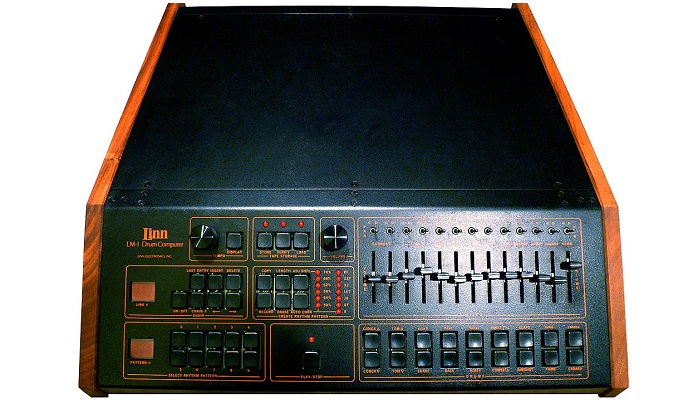
So, the TR-808 replicates drums, but not so realistically. Why not just use actual drums and get it over with?
Well, memory chips that could store and playback real-life drum recordings were way too expensive for most producers.
Unfortunately for Roland, the Linn LM-1 catered more to the target audience, and the TR-808 just wasn’t enough competition at the time.
Add the commercial losses to the lack of faulty transistors on the market, and soon Roland had to discontinue them in 1983, just three years after the initial release with only 12,000 units sold!
What Brought the 808 Back
Although the Linn LM-1 had its merits in sounding real and crispy, the TR-808 was still a more affordable option with an easier interface, and that helped it make a strong comeback!
The TR-808 machines would sell for surprisingly low prices on the used market. As a result, many producers would play around with them until they got the machine’s full potential.
With the rise of hip hop, electro music, and remix culture, people started becoming a bit more open to the not-so-realistic drumming.
It might have even helped push some limits and experiment with different music styles. Even after being discontinued, people still used the TR-808 to make bangers.
Take, for instance, Whitney Houston’s 1987 “I Wanna Dance With Somebody.” It wasn’t hip hop or electro, but still, producers managed to insert the 808’s bouncy beats into the mix!
It got to the point that any bass and kick mixture would be referred to as 808, even if the TR-808 was nowhere in sight when the track was produced.
Today’s 808
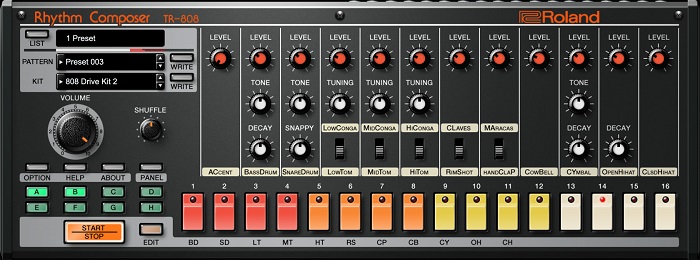
Is the TR-808 still the same today?
No, not really. The original Roland TR-808 was a black box with 16 color-coded keys that relate to the storage space.
Today, the popularized version of the 808s isn’t necessarily tied to an old machine. Not when you can even get realistic TR-808 simulation with plug-ins.
There’s even an official plug-in by Roland if you want to show a bit of loyalty to the original creators. It even mimics the interface of the TR-808 machine!
The appeal of these plug-ins is how much freedom to customize they provide. You can get hundreds of samples with just a few clicks (some aren’t free, though.)
Not only will such plug-ins give you bass and kick that’s kind of like the original thing, but some of them also provide modernized drum kits based on the TR-808.
You can get a variety of 808 adaptations like:
- 808 Kick
- 808 Snare
- 808 Hi-Hats
- 808 Conga
- 808 Handclap
- 808 Flex
- 808 Cymbal
- 808 Bass Drums
Bass vs. 808: What’s the Difference?

Both are on the low-end frequencies, and for all reasons and purposes: any 808 is a form of bass.
However, not every bass you hear is produced by the Roland TR-808. Bass can be any generalized low-end instrument between C4 and C2.
Regardless of what instrument you play, you can still get that beat. For instance, there’s bass in guitars, cellos, drums, horns, and obviously, the TR-808.
Keep in mind that not everyone is going to be fully aware of this technical distinction, and they could use the two terms interchangeably.
One nifty way of telling those two terms apart is checking the context. If they’re talking about a certain instrument, odds are they’ll say bass instead of 808.
That’s because 808 has taken a more technical route with new plug-ins, synthesizers, and VST software.
6 Handy Tips to Master Your 808s
If you’re still experimenting with 808s, I highly recommend leaving no stone unturned. Play around with different samples, distortion levels, tunes, and all that comes your way.
Getting this kind of first-hand experience is the best way to learn the basics and discover your taste as you go.
However, a little bit of technical advice never hurt anyone. In fact, it could help you save a project in a pinch.
Here are some tips that can help you perfect your 808:
1. Work Hard for Your Samples
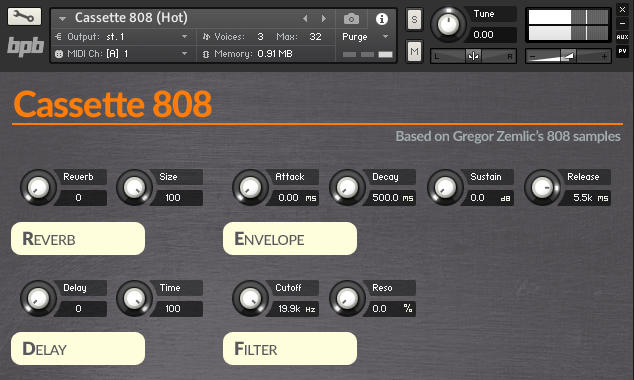
More often than not, I’ve seen bad samples ruin an otherwise great track. It’s a shame how easily one step can ruin the quality of the produced music!
That’s why I would always recommend spending some time and investing quite a bit of effort in getting the best samples possible for your 808.
Despite what you may have been told, you don’t have to break the bank to get great quality. There are some decent free packs out there that can be worth the while.
Anyhow, you want something clean and punchy. I would also advise you stick to samples that are tuned to C.
Besides that, you’ll still need to rely on your ear a bit to match the general track tune to the sample you pick eventually.
2. Tune It All Out (Without Clashing!)
If the 808 samples are sounding out of tune, you can use the Edison window to detect the pitch region and tune it from C to the desired tune by right-clicking the keyboard on the wrench side.
An easy way to spice up your bass and make it seem more interesting is to drag different segments up and down on the piano roll to create a melody pattern you like.
One issue that might pop up if you play around with the melody too much is that the 808s will start clashing.

To fix that, make sure that each channel has a separate cut group. Then you can go ahead with the “Cut Itself” feature, and you’ll have minimal to none overlapping.
You can always use stereo separation to mono and control the 808 patterns and attenuation level.
3. Find the Right 808 Frequency
Some people will tell you to set your 808s between 30 and 60 Hz. However, I usually prefer 40 and 60Hz.
Here’s why this range works best in this case:
If you were to go too low on the 808, some speakers would butcher it. Keep in mind that many speakers don’t handle frequencies below 40 Hz well, especially low-quality ones.
That’s why you shouldn’t go as low as 30 Hz with your 808s. It’ll just end up sounding very muddy for a lot of ears out there.
On the other hand, if you go over 60 Hz then is it really bass anymore? 808 bass is an iconically low-end musical tool, after all.
Once you’re set with the 808 sample frequency, take a look at how well it all flows with the kick frequency over the EQ. You might need to gel them together if that’s not the case.
4. Add a Hint of Distortion
When working with a particularly popular 808 sample, you’ll probably want to spice it up a bit and add your touch to it. Distortion is just the tool for that.

There are three settings to play around with your distortion. However, I recommend focusing on just the “Drive” for now.
If you’re using a separate distortion plug-in, like Camel Crusher, just aim to saturate the tube knob.
A subtle amount of distortion might give the low-ends just the right push to bounce on smaller speakers.
Notice that the keyword here is “subtle.” The more you add, the more your track will seem violent, but hey, maybe that’s the vibe you’re looking for. No judgment here.
5. Clear the Path for the 808s to Pop
It might sound easier said than done, but there’s so much you can do to customize your 808 and make them uniquely yours. You can use distortion tools, saturation, panning, and a lot more.
That’s all great, and I highly recommend that you play with things around till you’re comfortable with a unique configuration.
However, it’s not a magic “fix-all” button. If you have weak 808s, no amount of flare will save it from a muddy existence.
Instead, you need to consider why your 808s aren’t hitting right. In most cases, it’s because there’s something in its way.
Make the most out of your EQ’s Subtractive tool (or hi-pass filter) to eliminate any low-end frequencies that are overlapping with the 808s and muddying them.
For instance, if you pump up the 808 3 dB, make sure you cut out the same space from the kick’s EQ curve.
6. Increase the Attack Time to the max
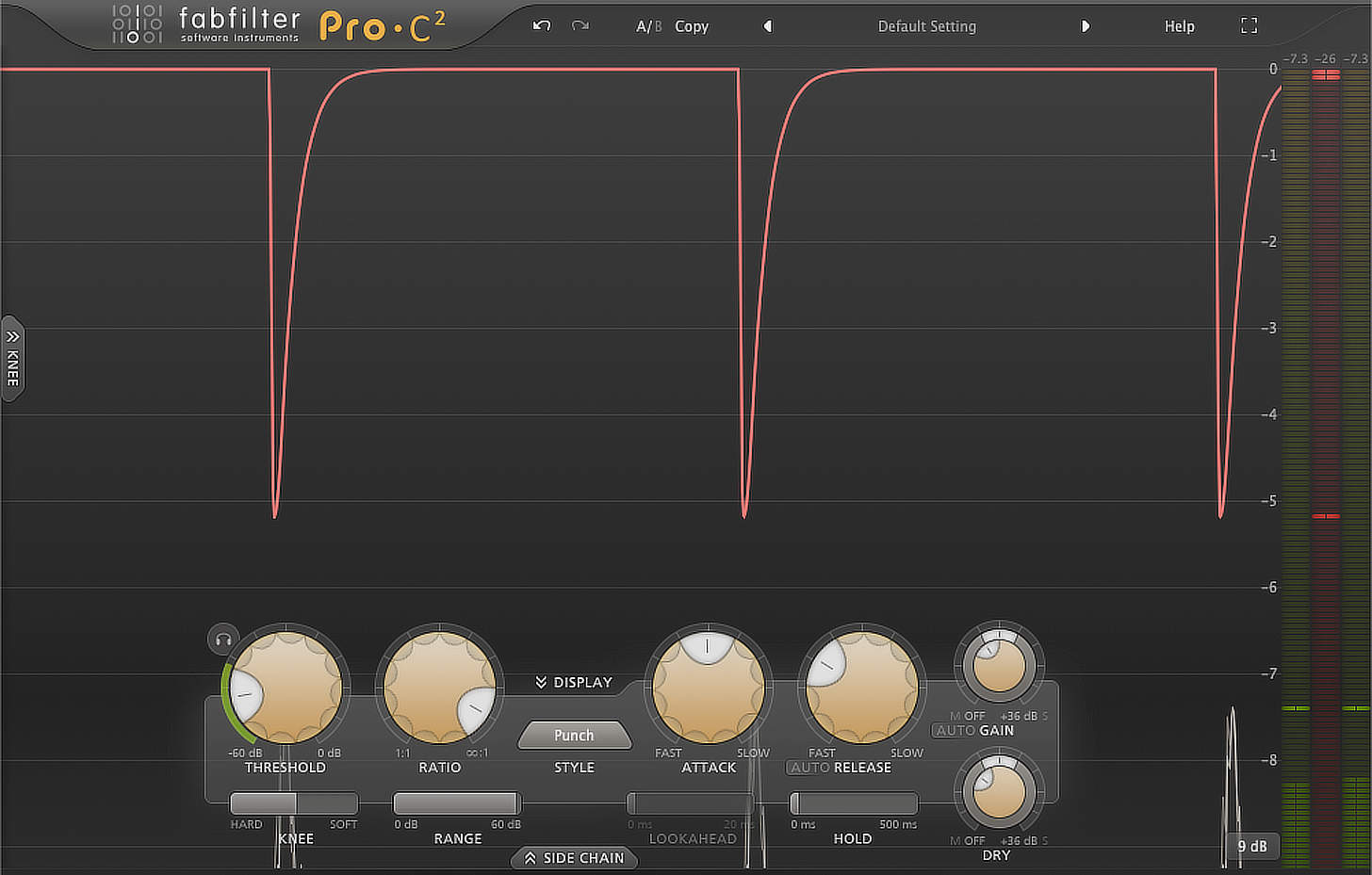
Since 808s are all about balancing kicks and bass, you need to make sure the two follow together smoothly.
One obvious way to do that is with the transients. Usually, if I’m dealing with a kick that has a particularly sharp transient, I tone down the one on the 808.
But the real tip here is setting the attack time to its fastest value. This way, you ease the jump from the kick to the bass.
Keep in mind that your end goal here isn’t to make a fantastic 808. It’s to make a fantastic 808 that highlights other aspects of the track, and the kick is just as essential.
You’ll also quickly notice that a fast attack time can set the 808 apart from other low-end frequencies.
Great Hits With 808s to Die for
One thing that many new people tend to forget when they’re still learning about music production is that great tastes come from knowing what’s out there.
This is not to say that you have to do what this major studio is doing or imitate that artist. You’ll find your touch later on and break the rules, but first, you have to be familiar with the big hits.
To do that, you have to combine theoretical advice and practical mixing sessions with a bit of listening. Yes, just by listening to other iconic tracks, you can build up experience.

If you’re looking for some hits to train your ears on picking up 808s, here’s a list of some of the best tracks out there:
- Planet Rocks’s Afrika Bambaataa, released in 1982
- Beastie Boys’ Paul Revere, released in 1986
- 808 State’s Flow Coma, released in 1988
- Lil Louis’s French Kiss, released in 1989
- Aphex Twin’s Xtal, released in 1922
- James Stinson and Gerald Donald’s Andreaen Sand Dunes, released in 1999
- Kanye West’s Love Lockdown, released in 2008
- Future’s March Madness, released in 2015
FAQs
Now that you have all your basics covered, you might be interested in a few of the frequently asked questions about 808s:
Q: Where can you get a Roland TR-808?
A: TR-808s are discontinued, and the produced units are extremely rare today. Even if you come across one, the price tag is going to be steep.
Keep in mind that there are a lot of fake copies out there! It’s just easier to get an 808 plug-in for your mixing software and call it a day.
Q: Are 808s necessary for a hip-hop track?
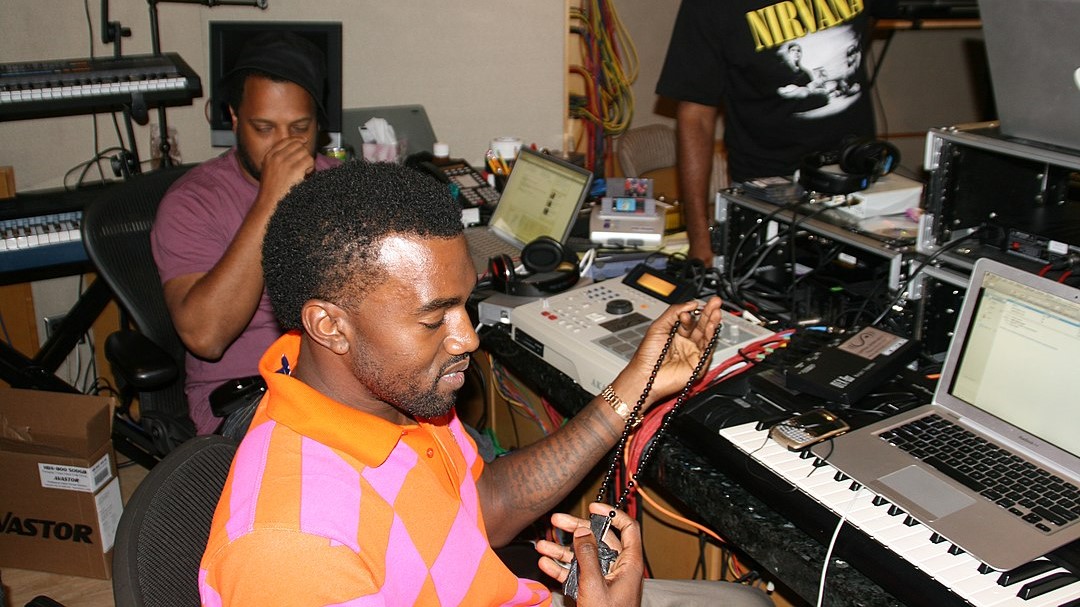
A: 808 are great for boosting rhythm, and they can add a bit of “je ne sais quoi” to the beats. However, you don’t have to add them in if you feel like your track is doing fine as it is.
I would just recommend finding an alternative source of bass, whether it’s a guitar or a synthesizer.
Q: What genres use 808 beats?
A: When people say 808s, the first thing that comes to mind is probably going to be Kayne’s hip hop. After all, he did have an entire album called “808s & Heartbreak” in 2008”.
However, if you keep your ears open, you’ll notice the iconic beats in electro, pop, techno, house, trap, and dance genres.
Q: How loud should 808s be?
A: It can be a bit tricky adjusting the volume on your first 808s. I would recommend going for -18 dBFS, even if it sounds a bit extreme.
Kick usually needs to be a tad bit louder than your bass, though. So, don’t just rely on numbers. Try to listen to the bounce between them yourself to make sure they don’t clash.
Q: Why are key C 808 samples the best?
A: You might have heard the saying “If it’s in C, it’s in key” before. That’s not far from the truth. You can use the “ctrl + up arrow” function to kick up an octave.
If you want to check what key a sample is, you can use the Edison editor (or your studio’s equivalent) to figure out what the original pitch is.


